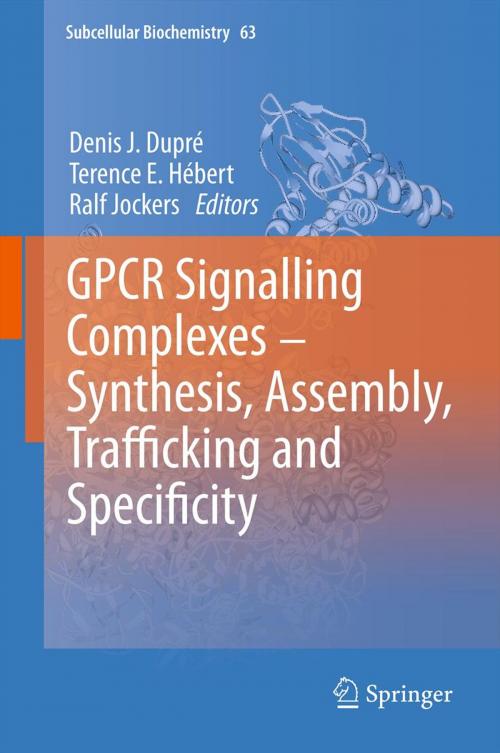GPCR Signalling Complexes – Synthesis, Assembly, Trafficking and Specificity
Nonfiction, Science & Nature, Science, Biological Sciences, Biochemistry, Health & Well Being, Medical, Medical Science, Pharmacology| Author: | ISBN: | 9789400747654 | |
| Publisher: | Springer Netherlands | Publication: | November 19, 2012 |
| Imprint: | Springer | Language: | English |
| Author: | |
| ISBN: | 9789400747654 |
| Publisher: | Springer Netherlands |
| Publication: | November 19, 2012 |
| Imprint: | Springer |
| Language: | English |
Main Question: G protein coupled receptors are involved in highly efficient and specific activation of signalling pathways. How do GPCR signalling complexes get assembled to generate such specificity? In order to answer this question, we need to understand how receptors and their signalling partners are synthesized, folded and quality-controlled in order to generate functional proteins. Then, we need to understand how each partner of the signalling complex is selected to join a complex, and what makes this assembly possible. GPCRs are known to be able to function as oligomers, what drives the assembly into oligomers and what will be the effects of such organization on specificity and efficacy of signal transduction. Once the receptor complexes are assembled, they need to reach different locations in the cell; what drives and controls the trafficking of GPCR signalling complexes. Finally, defects in synthesis, maturation or trafficking can alter functionality of GPCRs signalling complexes; how can we manipulate the system to make it function normally again? Pharmacological chaperones may just be part of the answer to this question.
Main Question: G protein coupled receptors are involved in highly efficient and specific activation of signalling pathways. How do GPCR signalling complexes get assembled to generate such specificity? In order to answer this question, we need to understand how receptors and their signalling partners are synthesized, folded and quality-controlled in order to generate functional proteins. Then, we need to understand how each partner of the signalling complex is selected to join a complex, and what makes this assembly possible. GPCRs are known to be able to function as oligomers, what drives the assembly into oligomers and what will be the effects of such organization on specificity and efficacy of signal transduction. Once the receptor complexes are assembled, they need to reach different locations in the cell; what drives and controls the trafficking of GPCR signalling complexes. Finally, defects in synthesis, maturation or trafficking can alter functionality of GPCRs signalling complexes; how can we manipulate the system to make it function normally again? Pharmacological chaperones may just be part of the answer to this question.















